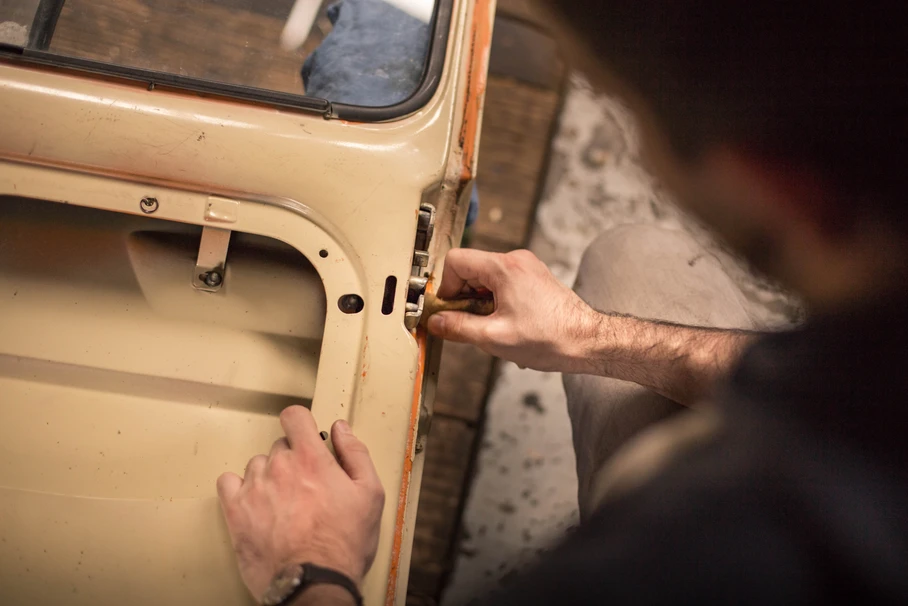The Science Behind Dent Repair: Methods, Results, and Costs
Car dents are an unfortunate reality for vehicle owners. Whether from a rogue shopping cart, minor fender bender, or hailstorm, dents and dings are not only unsightly but can affect a car’s value and structural integrity. Let’s delve into the science and techniques behind dent repair, exploring both traditional and newer methods.
1. Traditional Dent Repair:
How It Works:
This method often involves filling the dent with body filler or putty, then sanding it smooth to align with the vehicle’s surface. Once smooth, the area is primed, painted, and clear-coated to match the rest of the vehicle.
Pros:
Effective for large dents or those with paint damage.
Cons:
It can be more time-consuming, possibly lead to mismatched paint, and may affect the vehicle’s value.
Cost Implications:
Due to the labor and materials involved, especially if repainting is required, this method can be more expensive.
2. Paintless Dent Repair (PDR):
How It Works:
Skilled technicians use specialized tools to gently push or pull the dented metal back to its original form from behind the dent. This method retains the original paint, eliminating the need for fillers, sanding, or repainting.
Pros:
Maintains the original paint and is quicker than traditional methods. Ideal for small dents where paint is unbroken.
Cons:
Not suitable for large dents, deep dents, or those with cracked paint.
Cost Implications:
Typically, PDR is more cost-effective due to the reduced labor and no need for expensive paint.
3. Heat and Cold Method:
How It Works:
For minor dents, applying heat (typically using a hairdryer) followed by rapid cooling (using compressed air) can cause the metal to expand and contract, pushing the dent out.
Pros:
A DIY solution suitable for very minor dents.
Cons:
It may not work for all dents and carries a risk of damaging the paint if not done carefully.
Cost Implications:
Low cost, especially if you already have the required tools at home.
How Choice of Method Affects the End Result:
Quality: Traditional methods, if done correctly, can completely erase the evidence of a dent but may lead to mismatched paint. PDR maintains the original paint, ensuring a consistent look.
Structural Integrity: PDR retains the vehicle’s original metal and paint, often leading to better long-term structural integrity than filler-based methods.
Vehicle Value: Cars repaired with PDR often have a higher resale value since they maintain their original paint and body metal.
In Conclusion:
The choice between traditional dent repair and paintless dent repair often comes down to the size, depth, and location of the dent, as well as budget considerations. While traditional methods offer a tried-and-true approach, PDR offers a faster, often more cost-effective solution that retains the vehicle’s original aesthetics and value. Regardless of the method, always consult with a professional to determine the best approach for your vehicle’s needs.

